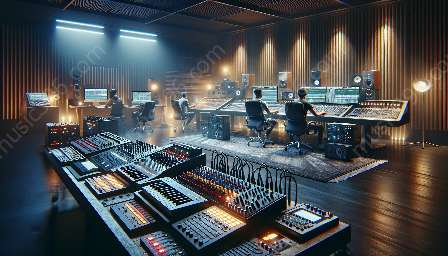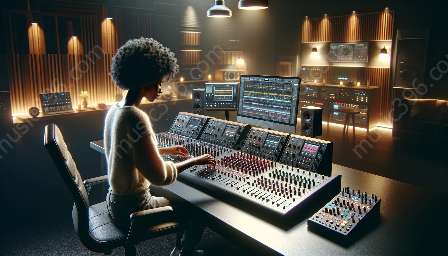In the world of audio mixing and music technology, the use of reference tracks can be a powerful tool for improving the quality and professional sound of a mix. When mixing music, it's essential to have a clear understanding of how reference tracks can be used effectively to achieve the desired results. This topic cluster aims to provide comprehensive insights into the effective use of reference tracks in mixing, covering their importance, practical application, and impact on the overall music production process.
Why Reference Tracks Matter
Reference tracks serve as sonic benchmarks, allowing mixing engineers and producers to compare their own mixes with professionally mastered tracks. This comparison helps to identify any discrepancies in terms of tonal balance, dynamics, stereo imaging, and overall sound quality. By referencing established industry standards, aspiring audio engineers can gain valuable insights into the intricacies of professional mixing and learn how to achieve comparable results.
Practical Application of Reference Tracks
When utilizing reference tracks in the mixing process, it's crucial to select high-quality recordings that are relevant to the genre and style of the project at hand. By actively listening to reference tracks in the same environment and using the same monitoring system as the mix, engineers can make informed decisions regarding EQ, compression, spatial effects, and other mix elements. Furthermore, referencing tracks at different stages of the mixing process can ensure consistent progress and guide adjustments to achieve the desired sonic characteristics.
Integrating Reference Tracks into the Workflow
Integrating reference tracks into the mixing workflow involves careful consideration of how and when to use them effectively. Implementing A/B comparisons between the mix and reference tracks can shed light on areas that require improvement or refinement, leading to more precise adjustments and a better understanding of the objectives for the final mix. Additionally, referencing tracks during the mastering phase can aid in making informed mastering decisions and contribute to achieving a cohesive and polished final product.
Utilizing Technology for Reference Track Management
Advancements in music technology have facilitated the seamless integration of reference tracks into digital audio workstations (DAWs) and mixing environments. Modern production tools offer features such as dedicated reference track slots, instant switching between the mix and reference tracks, and integrated spectrum analysis for detailed comparison. These technological advancements empower mixing professionals to streamline their workflow and make more accurate judgments based on reference track analysis.
Enhancing Critical Listening Skills
By actively engaging with reference tracks, mixing engineers can enhance their critical listening abilities, honing their capacity to discern subtle nuances and sonic differences. Regular practice of referencing tracks can refine the ear's perception of tonal balance, frequency distribution, spatial imaging, and dynamic range, fostering an intuitive understanding of what constitutes a well-crafted mix. This skill development is invaluable for aspiring audio professionals seeking to elevate the quality of their work.
Conclusion
Effective use of reference tracks in audio mixing is fundamental to achieving professional-caliber results and elevating the overall quality of music production. By recognizing the importance of reference tracks, understanding their practical application, integrating them into the workflow, leveraging technological support, and refining critical listening skills, mixing engineers can harness the power of reference tracks to create impactful and sonically captivating mixes.

























